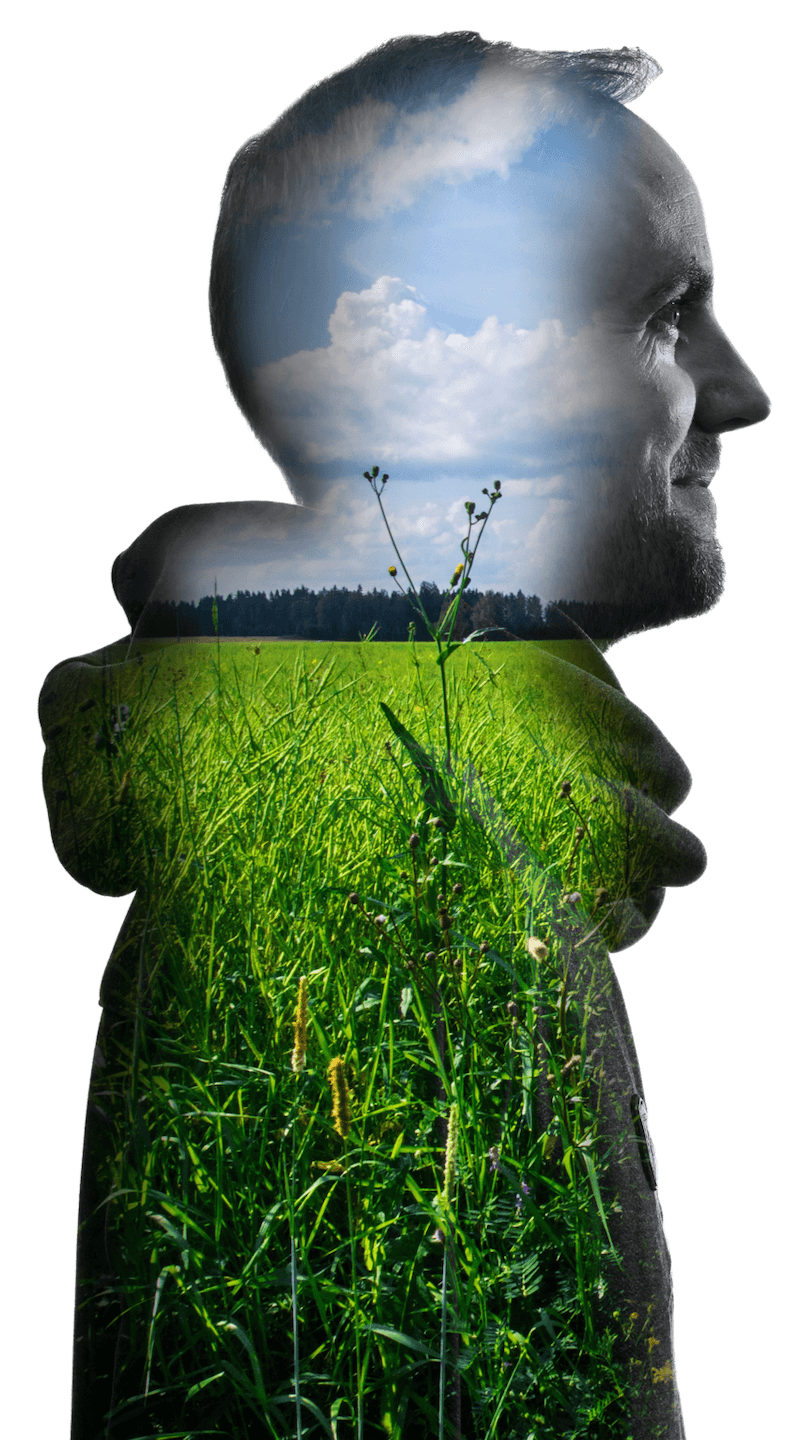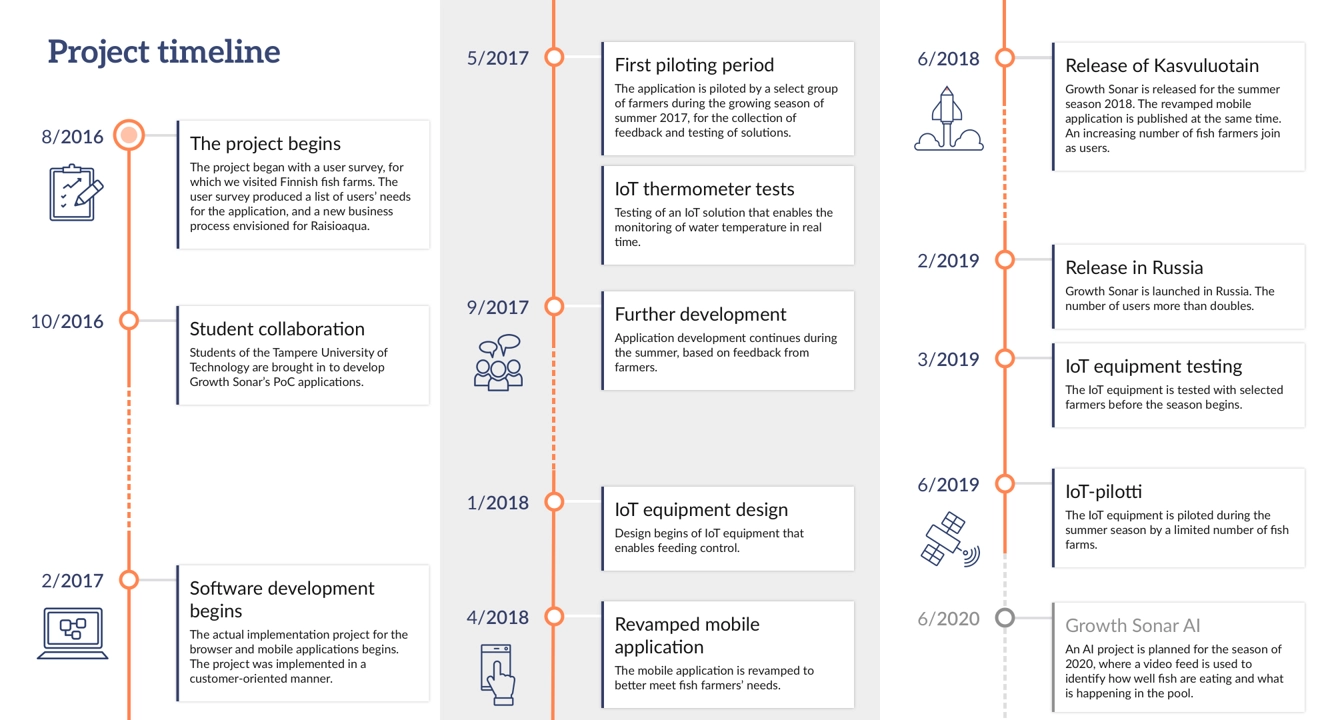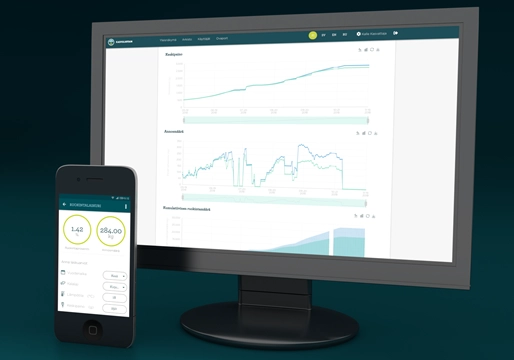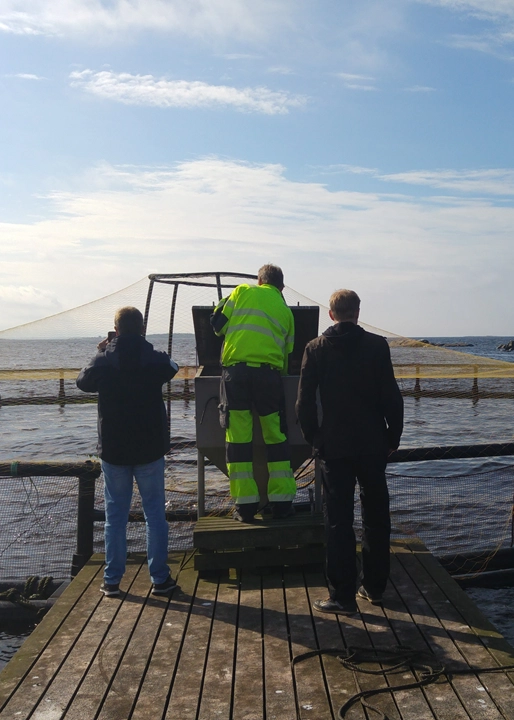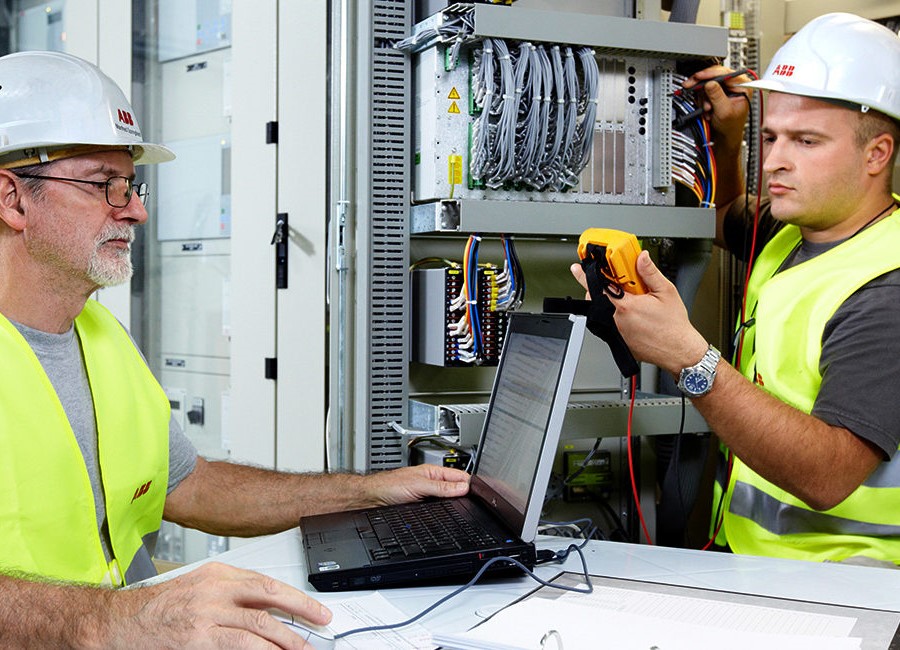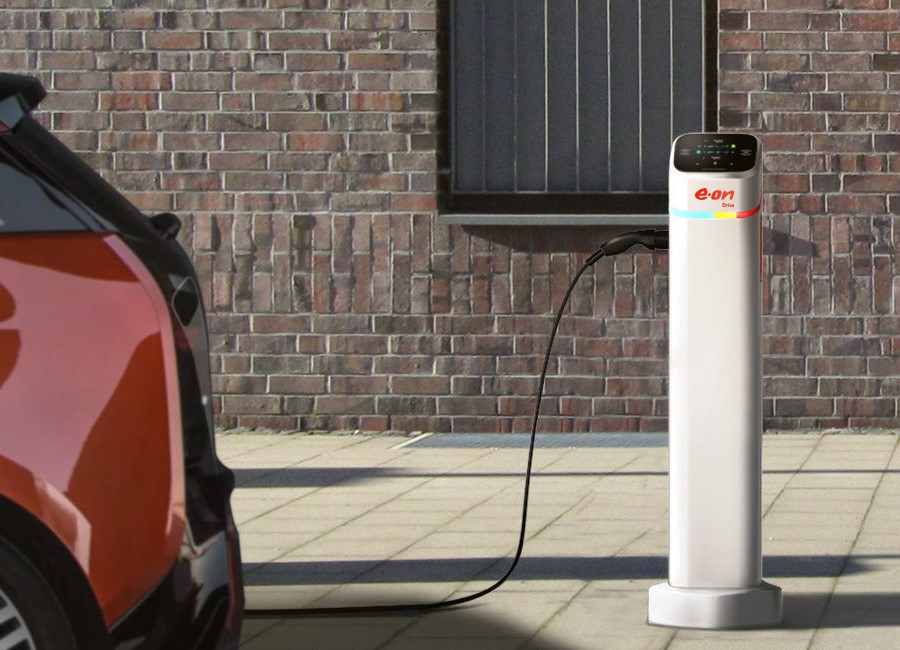We began the project by visiting Finnish fish farms to identify customers’ needs. Meeting such needs would bring users clear added value and improved profitability. We observed the everyday work and lives of fish farmers during various stages of their work. To enable the smoothest possible transition from post-its and Excel spreadsheets to digital solutions, we examined the farmers’ digital know-how. In addition, we found that the practices and everyday work of Finnish fish farmers can vary hugely.
The key need highlighted in the user survey was the elimination of manual work stages to free uptime for feeding fish and developing the company’s business. Users wanted to get rid of the paper strewn around office desks and boats; they wanted to cut straight to data in digital format. By being easier to view, data recorded by Growth Sonar would provide farmers with even better opportunities to develop their fish feeding and businesses, and to measure and improve the farms’ profitability.
